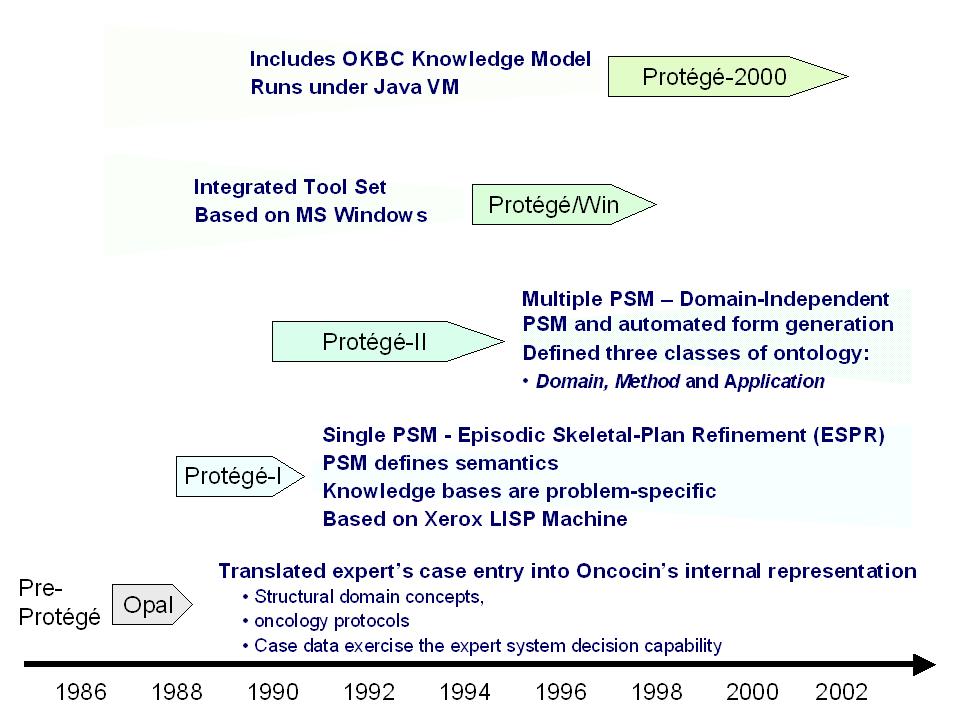resulting in a suggested treatment
or test. The knowledge base, a collection of if-then rules and other data, captured
the clinical protocols. Opal translated the expert's input, via graphical forms,
into an internal representation specifically tailored for Oncocin. This project
identified three different levels of knowledge for this particular information:
1. Structural domain concepts used by the knowledge
engineer to create the Opal knowledge- acquisition application;
2.
The domain expert (oncologist) knowledge - oncology protocols;
3.
Case data entered by the user to exercise the expert system decision capability.
Since Opal was inference engine based, it enabled
reuse by knowledge engineers to create different knowledge bases - ultimately
creating domain specific expert systems. The knowledge engineer was responsible
for the knowledge acquisition; a tedious and time-intensive task. Unfortunately,
the concept of a knowledge engineer separated the domain experts from the domain
knowledge bases and this separation introduced a potentially large source of incorrect
knowledge.
In 1987, Mark Musen built an application
for knowledge-based systems with a goal of building knowledge-acquisition application
as part of Oncocin. Based on these three different levels of knowledge, he believed
that knowledge acquisition occurs in phases with knowledge obtained in one phase
defining the structural knowledge for subsequent phases. Musen's goal was to reduce
the work engineers did to construct knowledge bases during knowledge-acquisition.
He noticed that knowledge obtained during a specific phase influences the knowledge
related application required for later stages.
From
this early concept, Protégé evolved through four phases, resulting
in a rich development environment available for both research and knowledge-management.
(see http://smi-web.stanford.edu/pubs/SMI_Abstracts
/SMI-2002-0943.html for more information on the evolution of Protégé.
Protégé-I - Knowledge Bases
This early phase, where Protégé-I
simplified the knowledge acquisition process for building medical expert systems,
learned from the earlier OPAL- based system. The intent of the tool was to simplify
the knowledge acquisition process for the knowledge engineer, already overloaded
with complex tasks to perform - a key issue with early expert system development.
One goal of Protégé was to provide an application that | |

Figure 1: Evolution and enhancements of Protégé from 1986
to present. created Knowledge Acquisition tools (KA) from a formally
defined collection of concepts. This enabled the domain expert to create the knowledge
base, eliminating the time consuming process of the knowledge engineer learning
the domain. Early assumptions for Protégé 1 included:
|